![]()
![]()
![]()
Use LEFT and RIGHT arrow keys to navigate between flashcards;
Use UP and DOWN arrow keys to flip the card;
H to show hint;
A reads text to speech;
27 Cards in this Set
- Front
- Back
- 3rd side (hint)
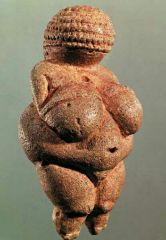
|
Woman of Willendorf. Paleolithic Period. 25,000 BCE. Fertility Image. Aspects of Fertility are emphasized. Modern day Austria. No metal tools.
|
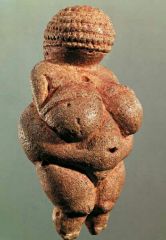
This woman has a great will for only 25.
|
|
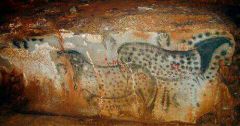
|
Spotted Horses and Negative Handprints, Pech-Merle France. Paleolithic Period. 16,000 BCE. Hunter-Gatherers who made the images as religious or magical. Rock might have inspired image. Not painted in living quarters.
|
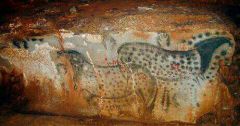
These horses rock from far across the fish pond
|
|
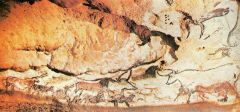
|
Hall of the Bulls, (Lascaux, France). Paleolithic Period. 15,000 BCE. Religious or magical purpose. Some of the animals are pierced. TWISTED PERSPECTIVE. Different layers.
|
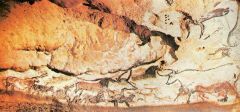
Don't get this hall twisted.
|
|
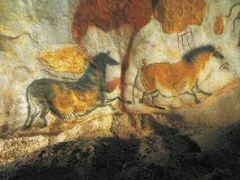
|
Chinese Horse and Tectiform. (Lascaux, France). Paleolithic Period. 15,000 BCE. Tectiforms may have had religious significance.
|
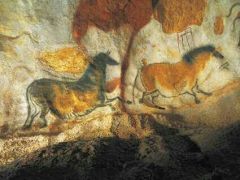
This is a technically sound painting.
|
|

|
Man, Rhinoceros, Bison (Lascaux, France). Paleolithic Period. 15,000 BCE. Man shown as a stick figure with erection. Might be in a trance. Bison has been disemboweled. Religious or magical significance. Bird staff.
|
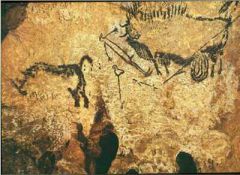
Rhino this man has 15 bison.
|
|

|
Fortification Walls at Jericho. Neolithic Period. ca. 8,000-7,000 BCE. Built for defense. Five to 12 feet thick, tower 30 feet high. Town planning and masonry developed during this time.
|

If these walls could talk.
|
|
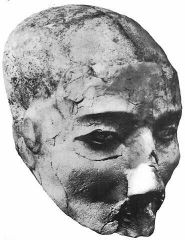
|
Human Skull. (Jericho). Neolithic Period. Skulls covered in plaster and shells placed in eyes to appear more lifelike. Dead were placed under the floor perhaps to ward off evil spirits. Cult of the dead.
|
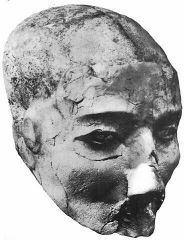
This skull was a cult hit.
|
|
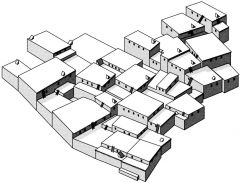
|
Catal Huyuk (Turkey). Neolithic Period. 6,000 BCE. There were no streets. Houses had platforms and tunnels. Shrines to the male deity (Bull). Female deity (Leopard) shown in statue work. Placed the dead in the walls with heads exposed.
|
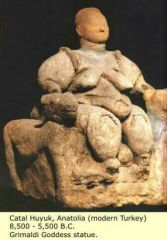
|
|
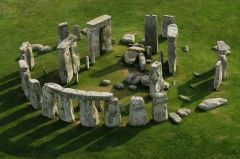
|
Stonehenge (Salisbury Plains, England). Neolithic Period. 2,750-1400 BCE. Cromlech= Circular Religious Monument. Trilithons= Three stacked stones. Megaliths= Large Stones. Post and Lentil system (Menhirs and Lentils). Altar, Blue U, Sarsen U, Blue Circle, Sarsen Circle. Religious, Funerary, and seasonal clock. Heel Stone. Also used Mortices and Tenons.
|
This site would Mortify you.
|
|
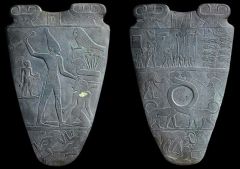
|
Palette of King Narmer. Ancient Egypt. 3,100 BCE. Slate. Purpose: To commemorate the unification of Upper and Lower Egypt. Horus, Papyrus (Lower Egypt). Hallmarks: Composite View, Ground line, Holy Ground, Hierarchical Scale.
|
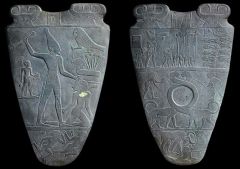
This piece suits my namesakes palate.
|
|
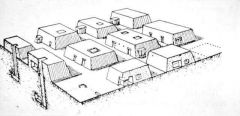
|
Group of Mastabas. Ancient Egypt. 4th Dynasty. Funerary Buildings. Very simple. Bodies buried below ground.
|
Mastaba'en dead
|
|
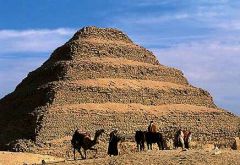
|
Stepped Pyramid of King Djoser. Ancient Egypt. Third Dynasty. Artist: Imhotep. ca. 2700 BCE. Made of Limestone. No rooms aboveground. Sides oriented to be aligned with cardinal directions and used as a stair for the KA of the deceased to ascend to meet Sun God Amun-Ra. Engaged papyrus pyramids. Built on a mastaba.
|
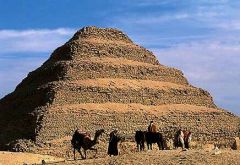
One dozen steps
|
|
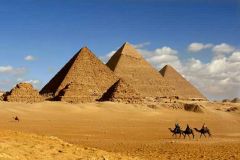
|
Great Pyramids of Giza; Khufu, Khafre, and Menkaure. Fourth Dynasty. 2,500 BCE. Limestone capped with Gold. Equilateral triangles. Sides aligned with cardinal points. Body was placed aboveground under a relieving arch. Built one vertical pile of stones at a time.
|
This is one Khul Khaffin for a Men.
|
|
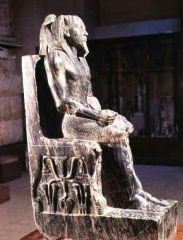
|
Khafre Portrait Sculpture. 2,500 BCE. Ancient Egypt. Made of Diorite. Hard stone. Purpose was to store the KA of Khafre in case his mummy decomposed. Horus behind his head. Guardian and Equivalent. Lotus, Papyrus; Upper and Lower Egypt.
|
This sculpture is Khafre colored
|
|
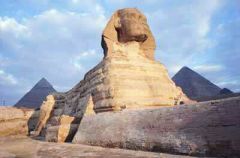
|
The Great Sphinx. Ancient Egypt. 2,570 BCE. Made of sandstone, found on site. Built by well compensated builders, not just slaves. Guardian of Pyramids. Bears Khafre's likeness.
|
This Sphinx is a football player.
|
|
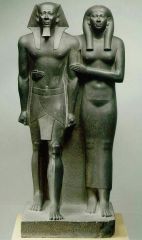
|
Menkaure and his wife. Ancient Egypt. Slate. ca. 2,515 BCE. Not freestanding. Pose is very traditional; standing, legs apart, fists. Canon= Fist is 1/18 the height of male figure. Idealized. Originally painted.
|
Menkaure have changed
|
|
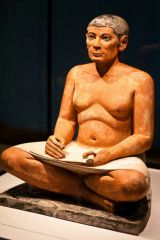
|
Sculpture of Seated Scribe. ca. 2,400 BCE. Limestone covered in gesso and painted. Provides a place for the KA to reside. Less idealized. Signs of aging.
|
Sit down
|
|
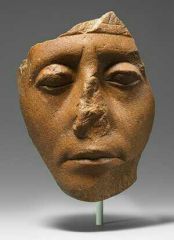
|
Senworset. Sculpture of Senworset. Middle Kingdom. 1,850 BCE. Made of Quartzite. Shows sadness= Relative of commoner. Economic depression.
|
Senworset days than this.
|
|
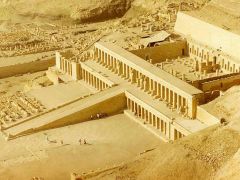
|
Temple of Queen Hatshepsut. Artist: Senmet. Date: 1478-1458 BCE. Very innovative terraced arrangement. Placed in the Valley of Hathor. Meant to be approached from a linear axis. All the arts; GESAMTKUNTSWERK.
|
Senmet in the Met
|
|
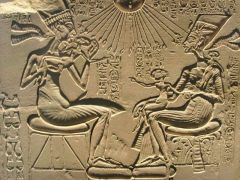
|
Akhenaten and his Family. Amarna Period. Ancient Egypt. Date: 1355 BCE. Medium: Limestone. Akhenaten moved the capital to Akhenaten from Thebes. Worshipped the Aten. Amarna style; androgynous, elongated necks, curves. Less stiff. Altered canon of proportions.
|
Amarna hug and kiss.
|
|
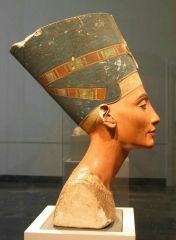
|
Portrait Sculpture of Queen Nefertiti. Ancient Egypt. Date: 1348-1336 BCE. Medium: Limestone covered in gesso and paint.
|
|
|
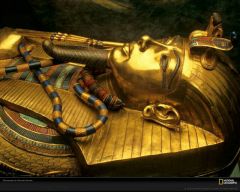
|
King Tutankhamen Sarcophagus. Date: 1336 BCE. Medium: Solid Gold 1/8" thick. Tut seen holding the crook and flail. Implements of Osiris.
|
|
|
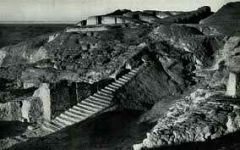
|
Plan of the White Temple on its Ziggurat. Date: 3,500-3,000BCE. Ancient Near Eastern. Modern-Day Iraq,Mesopatamia. Fertile crescent. City-States. Each had its own God. Temple was religious but NOT funerary. Distributed grain. Corners were oriented to cardinal directions. Cells= Inner sanctum. Approach in a circle.
|
White a Temple.
|
|
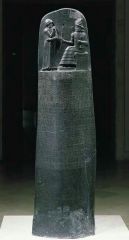
|
Law Code of Hammurabi. Date: ca. 1,760 BCE. Medium: Basalt. Structure called a Stele. 300 laws written on this structure. Cuneiform writing. First major extensive body of law. Depicts HAMMURABI and SHAMASH. Sun-God. Hieratic Scale. Composite view.
|
Shamash that sweet Strele
|
|
|
Mural. Lion
|
Lion Hunt Relief, Assurnasirpal II. Assyrian Empire. 850 BCE. Alabaster.
|
|
|
|
Arch.
|
Ishtar Gate. 575 BCE. Glazed brick.
|
|
|
|
Columns.
|
Audience Hall of Darius and Xerxes. 500 BCE. Persepolis. Persian peace.
|
|

